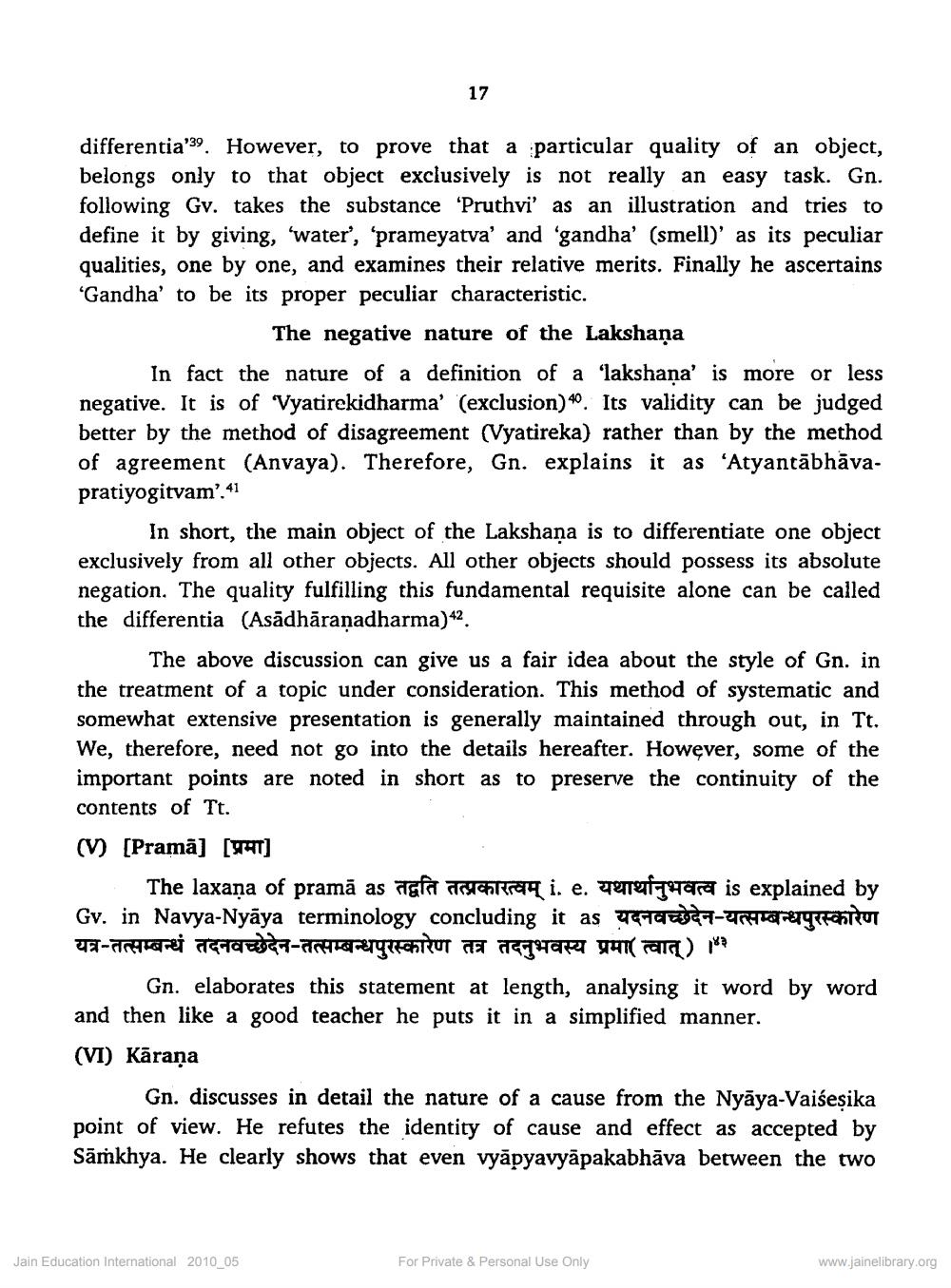________________
17
differentia'39. However, to prove that a particular quality of an object, belongs only to that object exclusively is not really an easy task. Gn. following Gv. takes the substance 'Pruthvi' as an illustration and tries to define it by giving, 'water', 'prameyatva' and 'gandha' (smell)' as its peculiar qualities, one by one, and examines their relative merits. Finally he ascertains 'Gandha' to be its proper peculiar characteristic.
The negative nature of the Lakshana
In fact the nature of a definition of a 'lakshana' is more or less negative. It is of 'Vyatirekidharma' (exclusion) 40. Its validity can be judged better by the method of disagreement (Vyatireka) rather than by the method of agreement (Anvaya). Therefore, Gn. explains it as 'Atyantābhāvapratiyogitvam'.41
In short, the main object of the Lakshana is to differentiate one object exclusively from all other objects. All other objects should possess its absolute negation. The quality fulfilling this fundamental requisite alone can be called the differentia (Asādhāraṇadharma)+2.
The above discussion can give us a fair idea about the style of Gn. in the treatment of a topic under consideration. This method of systematic and somewhat extensive presentation is generally maintained through out, in Tt. We, therefore, need not go into the details hereafter. However, some of the important points are noted in short as to preserve the continuity of the contents of Tt.
(V) [Prama] [YAT]
The laxana of pramā as तद्वति तत्प्रकारत्वम् i. e. यथार्थानुभवत्व is explained by Gv. in Navya-Nyāya terminology concluding it as यदनवच्छेदेन यत्सम्बन्धपुरस्कारेण यत्र-तत्सम्बन्धं तदनवच्छेदेन तत्सम्बन्धपुरस्कारेण तत्र तदनुभवस्य प्रमा( त्वात् ) ४३
Gn. elaborates this statement at length, analysing it word by word and then like a good teacher he puts it in a simplified manner.
(VI) Kāraṇa
Gn. discusses in detail the nature of a cause from the Nyāya-Vaiseṣika point of view. He refutes the identity of cause and effect as accepted by Samkhya. He clearly shows that even vyāpyavyāpakabhāva between the two
Jain Education International 2010_05
For Private & Personal Use Only
www.jainelibrary.org




